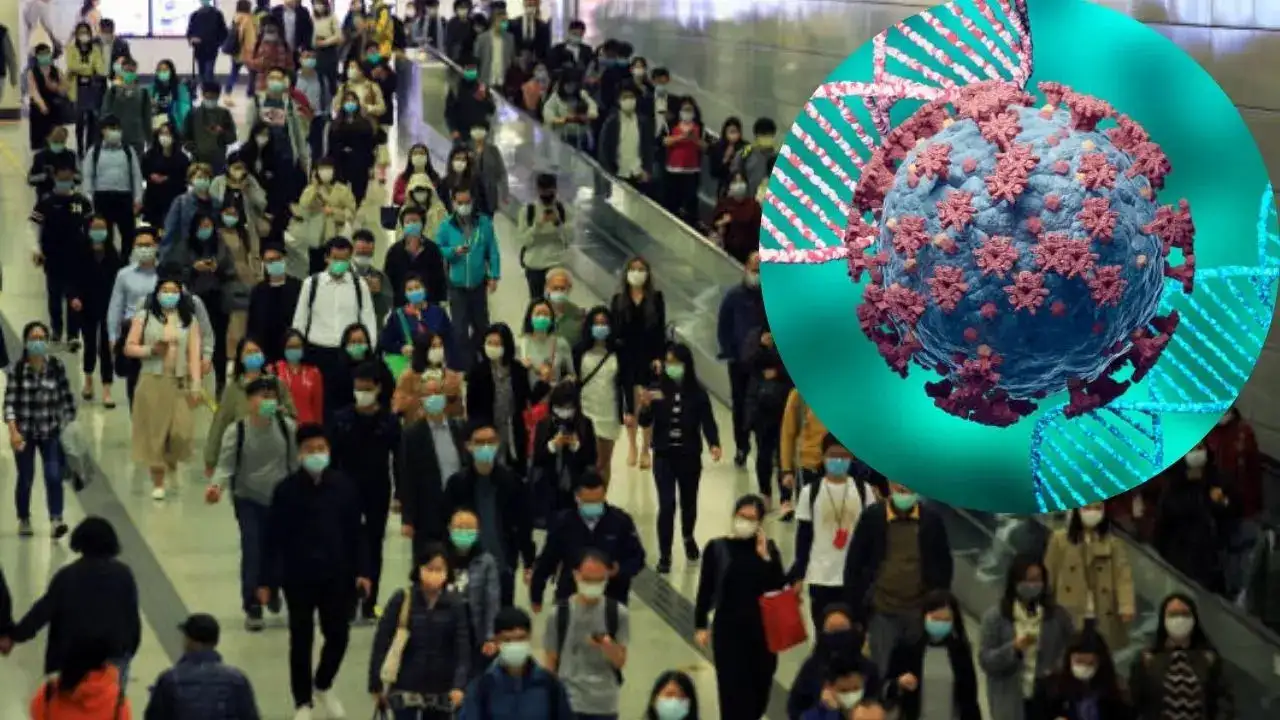
Number of cases of coronavirus signal a resurgence of COVI-19 infection across parts of Hong Kong and Singapore
Several Asian countries are seeing a rise in COVID-19 cases, though health experts stress that the infections are mostly mild and not associated with increased severity or mortality. In India so far, the situation remains under control. The predominant variant here is JN.1, a sub-variant of Omicron. Health authorities are maintaining strict surveillance, and the Ministry of Health remains alert.
Meanwhile, Singapore, Thailand, Hong Kong, and China have all reported rising COVID numbers in recent weeks. Singapore saw an estimated 14,200 COVID cases from April 27 to May 3, up from 11,000 the week before. The rise is being attributed to waning immunity and the emergence of LF.7 and NB.1.8, descendants of the JN.1 variant. Most people being treated haven’t received a booster shot in over a year. Thailand recorded 33,030 cases in the same week, with the XCC Omicron sub-variant driving the spike. Hong Kong reported a jump in positivity rates—from 6.21% to 13.66% in just four weeks. China has also seen an increase in people testing positive, with high positivity among patients visiting hospitals with flu-like symptoms.
What Are The LF.7 and NB.1.8 Variants?
While both LF.7 and NB.1.8 are descendants of JN.1, specific differences in their genetic makeup, particularly in the spike protein mutations, may influence their transmissibility and immune evasion capabilities. However, detailed comparative studies are ongoing to ascertain the exact distinctions between these two variants.
The BA.2.86 variant, first detected in August 2023, belongs to a highly mutated lineage of the virus, carrying over 30 genetic changes, many of which help it evade the immune system. While the original BA.2.86 did not spread widely, its descendant, JN.1, has evolved to be more infectious and is now spreading rapidly across regions. According to researchers at Yale Medicine, certain mutations in this family may also make the virus harder to detect.
However, unlike the earlier Alpha, Beta, and the devastating Delta variants that caused mass deaths in 2021, Omicron and its subvariants primarily infect the upper respiratory tract, leading to milder illness. However, the risk remains mildly higher in people with comorbidities.
Should you get COVID vaccine?
The good news is that vaccines still offer protection, despite JN.1 being a newer strain, the World Health Organization confirms that current vaccines remain effective at preventing severe illness.
Can This Turn Into a Pandemic-like Situation?
According to Dr. Rahul Pandit, Chair – Critical Care, Sir HN Reliance Foundation Hospital, India's successful vaccination drive, coupled with natural immunity and the evolving, milder nature of the virus, has helped the country manage well so far. "Post the 2022 Omicron wave, our bodies have adapted, both through vaccination and natural infection. The virus has mutated, becoming milder over time. What we are seeing now are flu-like symptoms lasting just a few days. Whether new strains will impact India remains to be seen, especially as no recent genome sequencing data has been released," he said.
Dr. Nihar Parekh added that while the current variant has an altered spike protein that helps it dodge immunity and spread faster, it doesn’t hit hard. “Most people are reporting mild symptoms—fever, body aches, headache, sore throat, and mild cough. Some may experience conjunctivitis or loose motions. It's being closely monitored, so there’s no need for panic,” he assured.
The key message here is to stay aware, follow health advisories, and consider a booster after consultation with your doctor.
